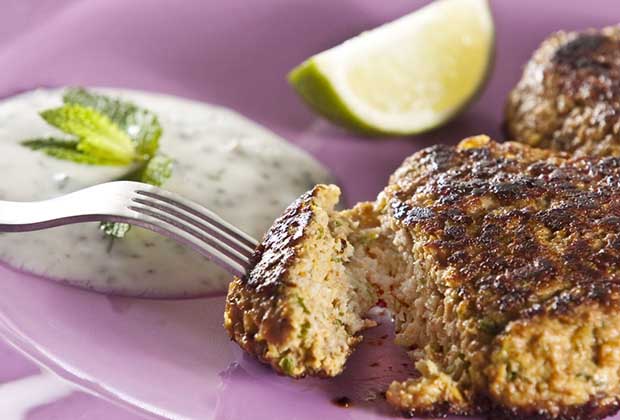What Lies At The Heart Of Lucknow’s Food Culture
- By Shirin MehrotraLoading...
- | 1 March 2016 12:49 PM GMT
 X
X
 Galouti kebabs are a Lucknawi speciality.
Galouti kebabs are a Lucknawi speciality.
Awadhi food has been getting its due attention lately, and rightly so. The man responsible for putting the cuisine on the culinary map, Chef Imtiaz Qureshi, has received a Padma Shri in the culinary subcategory. At a recent visit to JW Marriott Mumbai Juhu's Indian restaurant, Saffron, we caught up with Chef Shahnawaz Qureshi, the Indian masterchef at the restaurant, and the fourth generation descendant of the legendary Qureshi family. Over a special Awadhi thali that the restaurant has just launched, we talk about the depth of Awadhi cooking, the long list of ingredients and the comparison with Mughlai and Hyderabadi cuisines.
“There are 42 spices that go in the dish,” says Qureshi as we dip our crisp khameeri roti in the luscious nihari, his favourite, “and you can add more if you want more flavours and aroma,” he adds. But there’s a significant difference between the nihari at Lucknow’s famed Rahim in Chowk area, and the nihari on the table in front of me. “Nihari on Lucknow’s streets is more rustic, whereas at Saffron, we try to refine it by sieving it multiple times and using less oil to appeal to the foreign guests,” says Qureshi whose family runs a kebab-paratha joint in Lucknow’s Nishatganj area. Nihari and khameeri roti developed as poor man’s food, which was essentially made with left-over ingredients. It’s another matter that it’s the most celebrated dish of Awadhi cusine, second only to the biryani.
The chef's galouti kebabs are creamy and soft, like French pate, but not losing their authenticity. It’s because Qureshi carries all his spices from Lucknow, and makes the masala himself. There’s a different spice mix for every kebab and even other preparations like nihari, qorma and stew. We come to the difference between galouti, shaami and shikampuri kebabs and he explains, “galouti is made with kheema, which is pounded and then marinated overnight with raw papaya. Shaami on the other hand is made with cooked meat mixed with chana daal. Shikampuri is a variation of shaami with a filling.” The cuisine, which was once based around variety of meats, evolved to suit the vegetarians and you can see mushroom ki galouti, cabbage and green peas shikampuri on the menu.
 Biryani or pulav?
Biryani or pulav?
Coming back to the family legacy, we ask chef Qureshi about his inspirations and the reply is obvious, “I have been seeing my uncles and grand-uncles being celebrated as chefs, so there was an obvious charm. And I have been cooking since I was a kid, so becoming a professional chef was the obvious next step,” he beams.
For those who confuse between the two, Awadhi and Mughlai cusiines are vastly different from each other. The former relies more on the dum style of cooking, which means cooking on slow fire, is lighter when compared to Mughlai and focuses more on spices. As we get to the dum biryani, the question of whether the Lucknowi biryani is a biryani or pulav pops up. “It’s a pulav,” clarifies chef Qureshi, “we cook meat separately till it’s 70 per cent done, layer it with semi-cooked rice and cook it in dum style,” he adds. “Call it biryani or pulav, it’s the best you will eat,” he adds with a grin. Bring up Hyderabadi biryani and he quickly jumps to defend the Lucknowi version, “Hyderabadi biryani has a lot of masala, while the Lucknowi one has flavours and aroma mixed in rice and meat.” According to him, the heavy masala in Hyderabadi biryani spoils the eating experience, “mazaa kharab ho jata hai,” he quips.
Dessert is a crisp shahi tukda and mildly sweet rasmalai topped with grainy rabdi plated with a web of caramelised sugar. “You wouldn’t find very sugary sweets in Lucknow, and so I’ve replicated the same experience with a bit of garnish,” he says with a sense of pride in his food.
The Awadhi Thali at Saffron, JW Mariott is available only on Saturdays for lunch and dinner.
The author is a freelance food and travel writer and shares her stories on Foodchants. She is on a perpetual quest to learn about the history of regional food.




